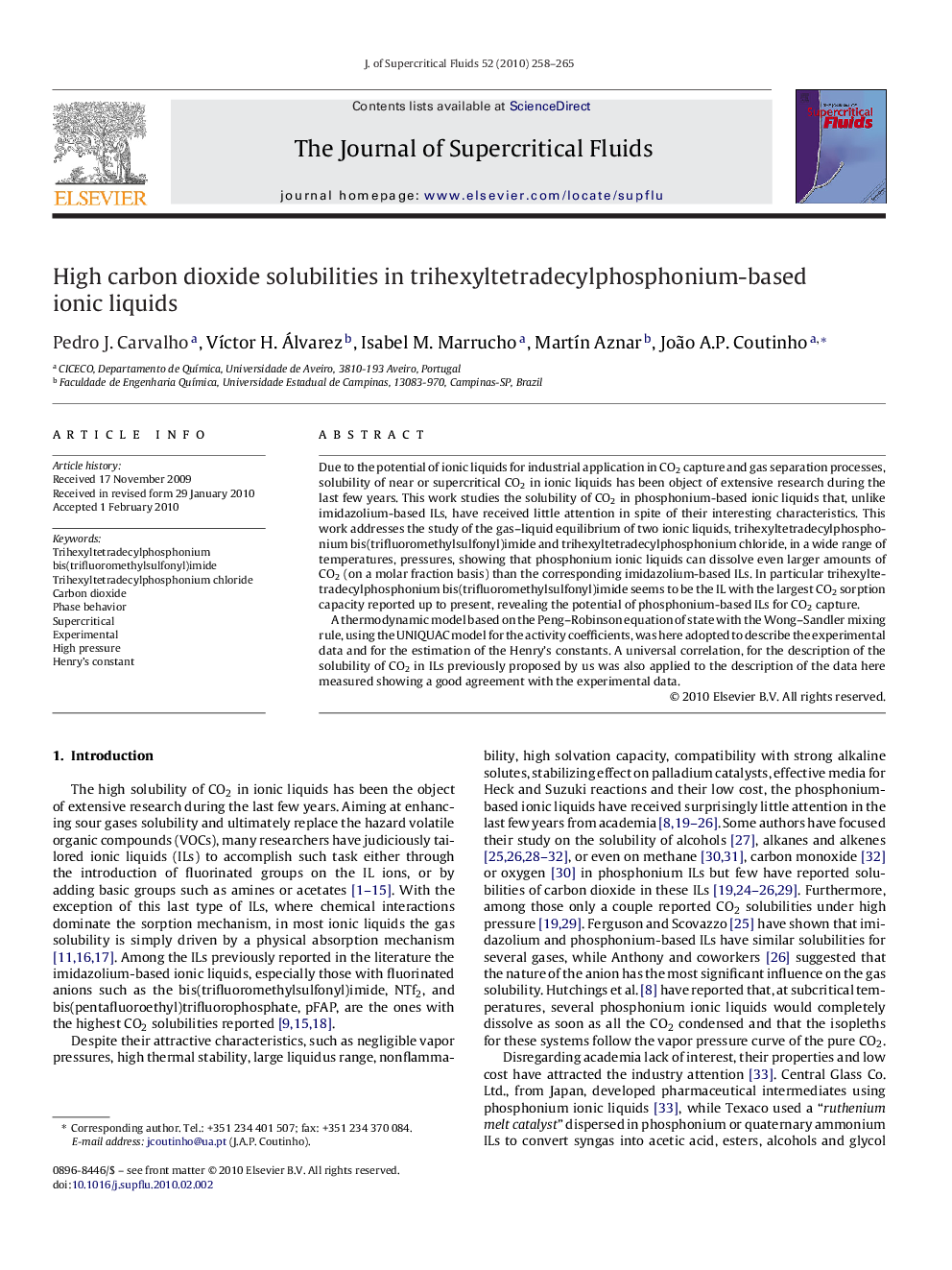| Article ID | Journal | Published Year | Pages | File Type |
|---|---|---|---|---|
| 231592 | The Journal of Supercritical Fluids | 2010 | 8 Pages |
Due to the potential of ionic liquids for industrial application in CO2 capture and gas separation processes, solubility of near or supercritical CO2 in ionic liquids has been object of extensive research during the last few years. This work studies the solubility of CO2 in phosphonium-based ionic liquids that, unlike imidazolium-based ILs, have received little attention in spite of their interesting characteristics. This work addresses the study of the gas–liquid equilibrium of two ionic liquids, trihexyltetradecylphosphonium bis(trifluoromethylsulfonyl)imide and trihexyltetradecylphosphonium chloride, in a wide range of temperatures, pressures, showing that phosphonium ionic liquids can dissolve even larger amounts of CO2 (on a molar fraction basis) than the corresponding imidazolium-based ILs. In particular trihexyltetradecylphosphonium bis(trifluoromethylsulfonyl)imide seems to be the IL with the largest CO2 sorption capacity reported up to present, revealing the potential of phosphonium-based ILs for CO2 capture.A thermodynamic model based on the Peng–Robinson equation of state with the Wong–Sandler mixing rule, using the UNIQUAC model for the activity coefficients, was here adopted to describe the experimental data and for the estimation of the Henry's constants. A universal correlation, for the description of the solubility of CO2 in ILs previously proposed by us was also applied to the description of the data here measured showing a good agreement with the experimental data.
Graphical abstractFigure optionsDownload full-size imageDownload as PowerPoint slide
